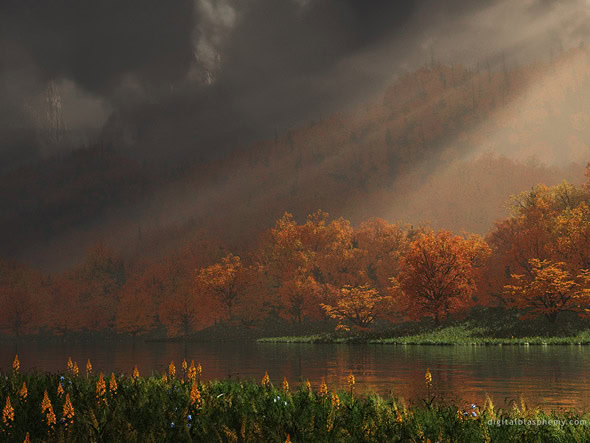When I say the word “artist,” what image comes to mind? I’ll bet you see a starving loner, living in a hovel, struggling to find acceptance in the art world for his or her Vision, dreaming of the day when the critics hail him or her as the Next Big Thing; from then on, everything they paint will be worth a fortune. In the long history of Art, though, it is really only quite recently, relatively speaking, that such a career path (if it can be called that) was even an option. From the first cave paintings in Lascaux to only a few hundred years ago, artists, musicians, composers, and writers were considered to be tradesmen, craftspeople. They may have belonged to a guild, which is sort of like a union. They designed and decorated churches, and wrote the hymns sung in them. They validated a nobleman’s rank by painting their portrait. These guys (they were mostly guys) were, basically, laborers. The idea of setting up shop in an attic somewhere, painting whatever images you felt like painting, was, simply, unthinkable.
Even today, if you’re going to become an artist, you’ll probably follow the traditional tradesman route as you pursue a career. You’ll go to college, learn your trade, and find work designing print ads, TV commercials, book covers, logos. Maybe you’ll work in the movie industry, creating matte paintings, 3D models, or doing animation. Just as artists down the centuries have done, you will create what others tell you to create. Let’s say, however, that you decide to make a living selling paintings, just as Monet, Van Gogh, and Picasso did. In that case, you will be up against an art establishment that has remained much the way it was in their day. A handful of critics and “experts” decide what is, and what is not, Art, and you will succeed or fail as they see fit. Your work must follow the rules as set down by this elite. So even when you are making a living with your brush, you are still beholden to what others think. (Tom Wolfe documented this state of affairs in his wonderfully merciless way back in 1975, in The Painted Word

Indian Summer, by Ryan Bliss. Image copyright digitalblasphemy.com.
The democratizing force known as the Internet is changing all that. For proof, I offer the life and work of Ryan Bliss. As he puts it, “I’ve been making pictures with a PC since I got my first one in late 1994. Aldus Photostyler and Kai Power Tools came bundled free with my lightning fast Compaq 486/66.” Finding that a BA in English was not much of a meal ticket, he went back to school and got a second degree, this time in Computer Science. Back then, you could get a CS degree and not go anywhere near imaging programs. It was a programming degree, and did not give Bliss training in image-making on the computer. But that’s what he loved to do. Bliss did not have an interest or talent in traditional drawing. This fact alone would have prevented him from ever making it as an artist, prior to the advent of the PC. Combine that with his lack of art education, and his story becomes even more unlikely. Luckily for Bliss (and for us), “… the computer allows me to reproduce the images in my head without needing to control my clumsy hands.” At first, he showed these off to his college roommates, as “wallpaper” on his computer screen. By 1997, Ryan began sharing his wallpaper images on the Internet, on a site named “Digital Blasphemy.” Thus began one of the great success stories of the Internet, and the art world.

Tropical Moon, by Ryan Bliss. Image copyright digitalblasphemy.com.
The Internet has allowed Bliss to step around the ancient gallery system and share his work directly with the public. His success is not due to luck, politics, or connections, but rather to his talent and the extraordinary images he creates. In 1999, when Digital Blasphemy was two years old, Bliss decided to leave his day job as a programmer and try to make his living from the wallpaper images on his site. His business model for this is to give away a small number of images, and restrict the remainder to paid subscribers. His income is derived from the subscriptions and the display ads on the site (site traffic is currently close to 20,000 visitors per day).
The primary software Bliss uses are Vue and Lightwave. There have been many imitators trying to emulate Bliss’s success. His site continues to be the most-visited wallpaper site on the Internet. Bliss is also now offering some of his images as calendars and mouse pads, via Zazzle. You can see his work at www.digitalblasphemy.com. Visit Ryan Bliss’s Zazzle store here.
